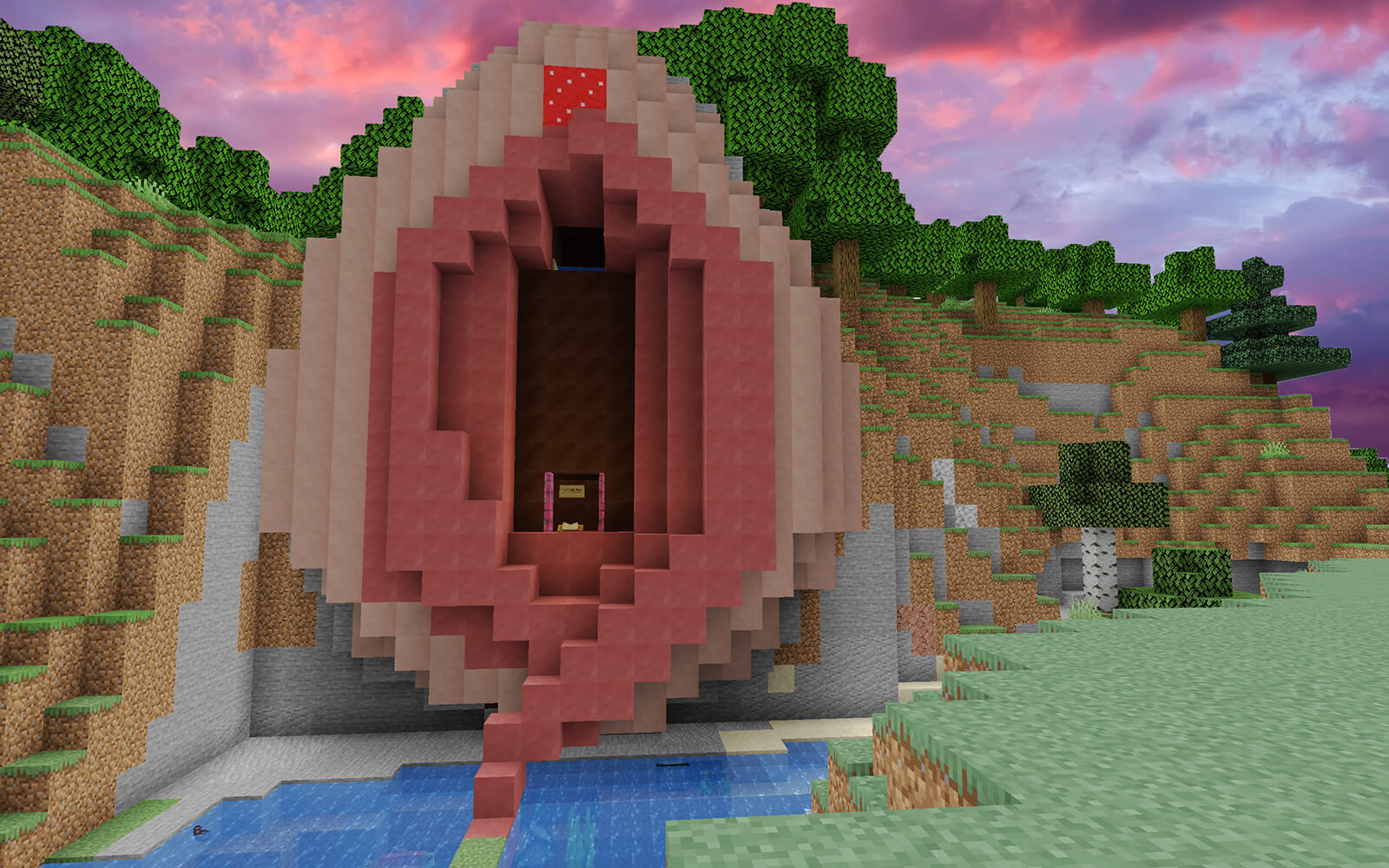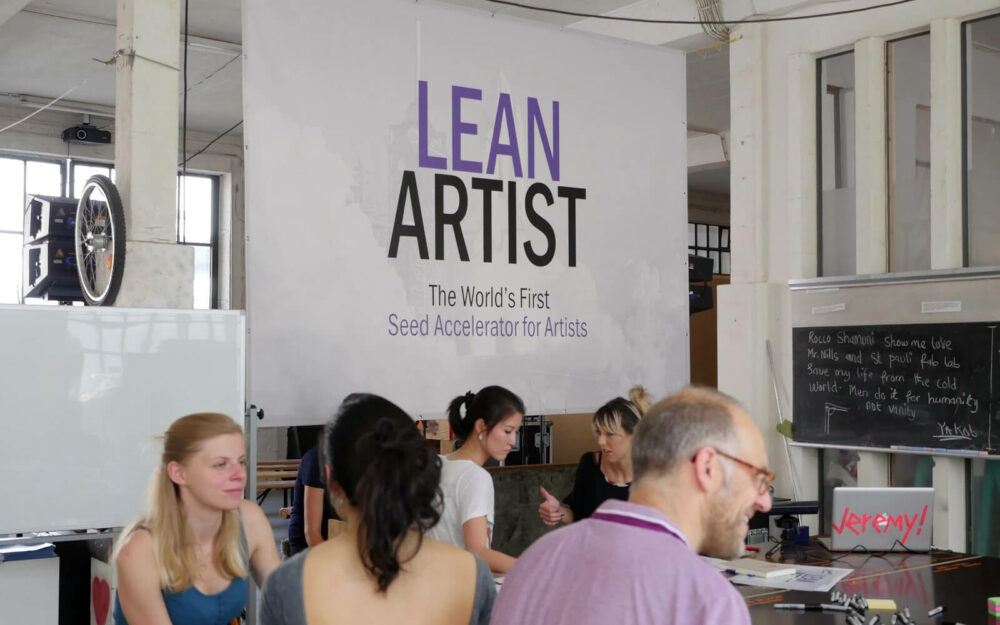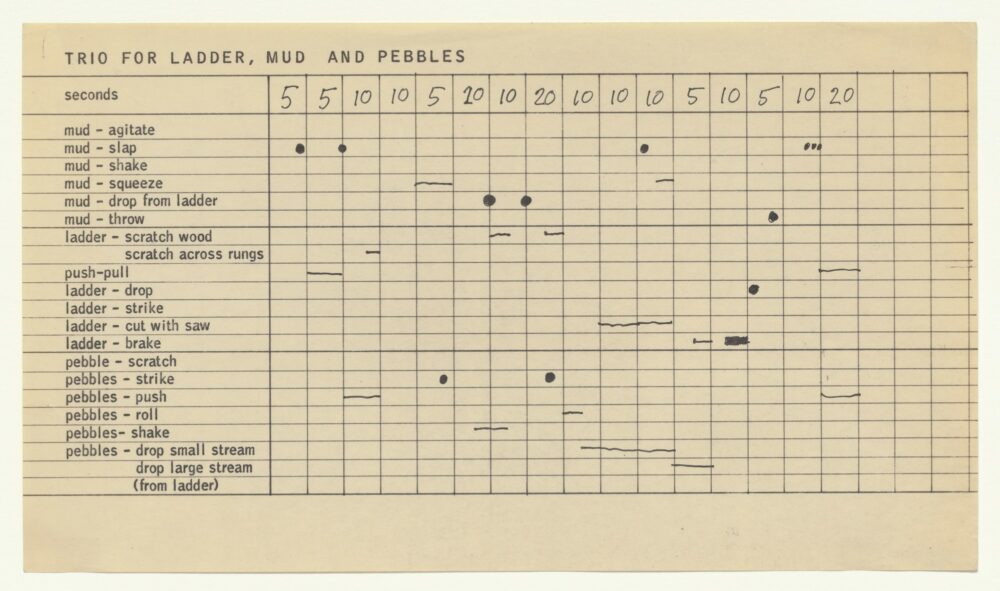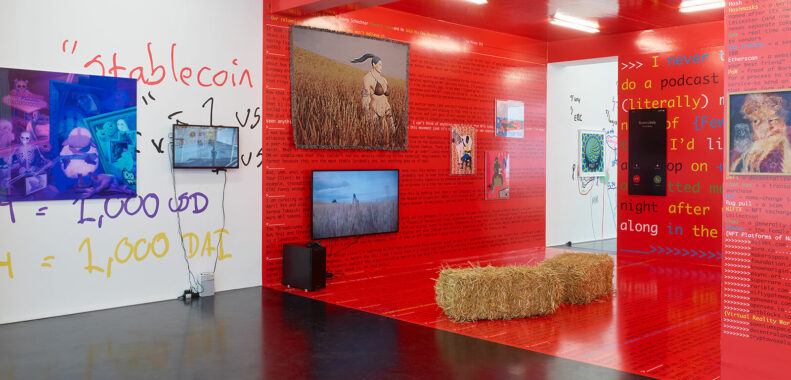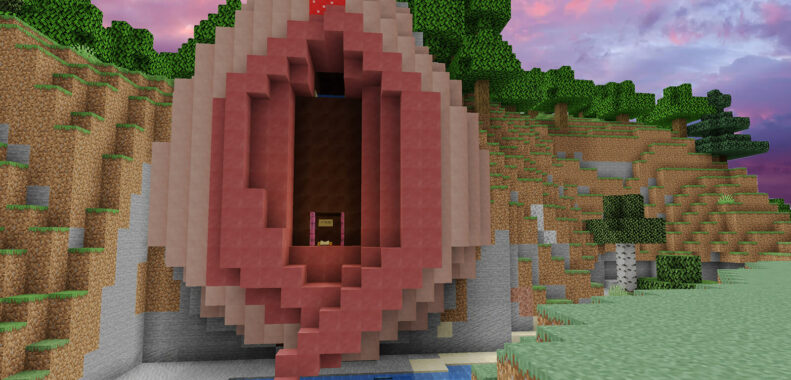All
Performance, With Still Life? at the Walker Art Center
“The Paradox of Stillness: Art, Object, and Performance” opens at Minneapolis’ Walker Art Center. Curators Vincenzo de Bellis and Jadine Collingwood mine the gap between ”still life and the living picture” through works by 60 artists active over a half century—from Joan Jonas to Jordan Wolfson. The strangeness of Haegue Yang’s Sonic Intermediates (2020, image) captures the lines blurred within the show—interactive, ‘viewers’ turn its eccentric forms, sounding metallic tones and textures.
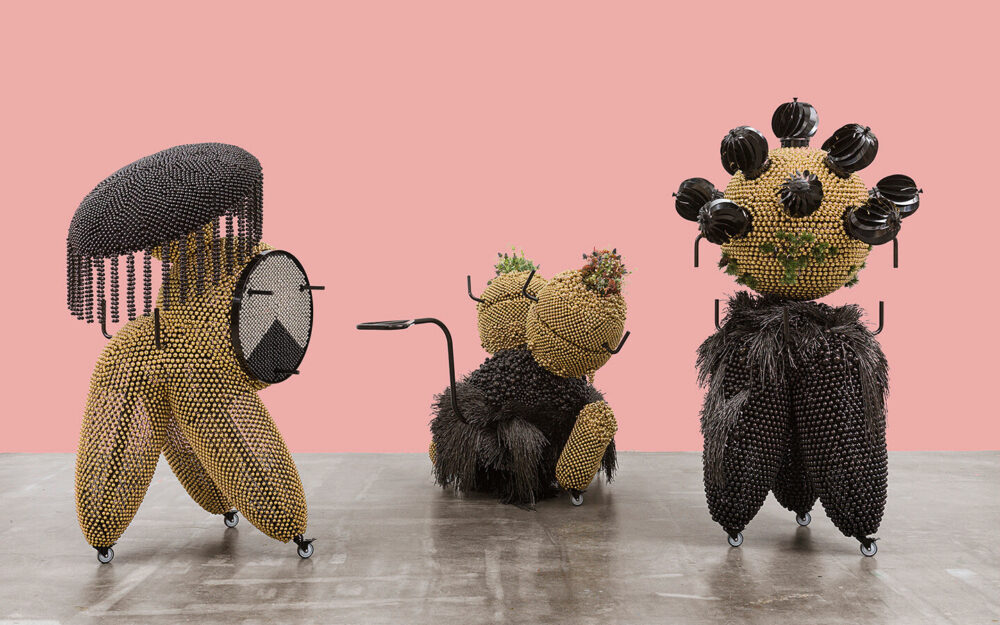
Marking the 37th birthday of Mark Zuckerberg, The Wrong kicks off a four-week long 24/7 stream of Ben Grosser’s ORDER OF MAGNITUDE (2019), a 47-minute supercut of every time the Facebook CEO said the words “more,” “grow,” or metrics such as “one billion” between 2004 and 2019. The piece premiered as part of arebyte On Screen and “acts as a lens on what Mark cares about, how he thinks, and what he hopes to attain.” Now you can now subject yourself to 750 minutes of it—it’s “more more than ever before.”

The Conundrum
Ezra Klein Enjoys the Spaciousness of the UFO Mystery
“I really don’t know what’s behind these videos and reports, and I relish that. In this case, that is my bias: I enjoy the spaciousness of mystery.”
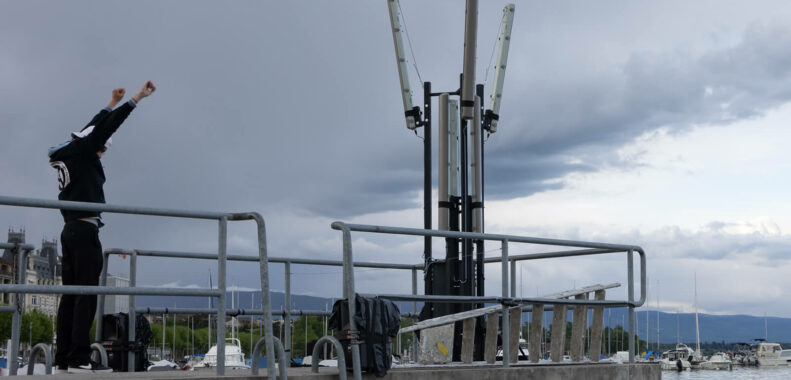
At Mapping Festival, Ted Häring’s Antenna Totem Signifies the “Disturbing Majesty” of Cellular Towers
Hailing from the future, Mapping Festival “2051” returns to Geneva with “deviant art and electronics.” Over the course of ten days, works by Frederik de Wilde, Anne Horel, Jonghong Park, 1024 Architecture, Cie Ultra and others are exhibited and performed across the city. Robert Seidel, for example, is set to project his light work Tempest onto lake Geneva’s iconic water fountain while onshore, Ted Häring’s totemic sound sculpture ANTNA (image) imitates the “disturbing majesty” of cellular 4G/5G antennas.
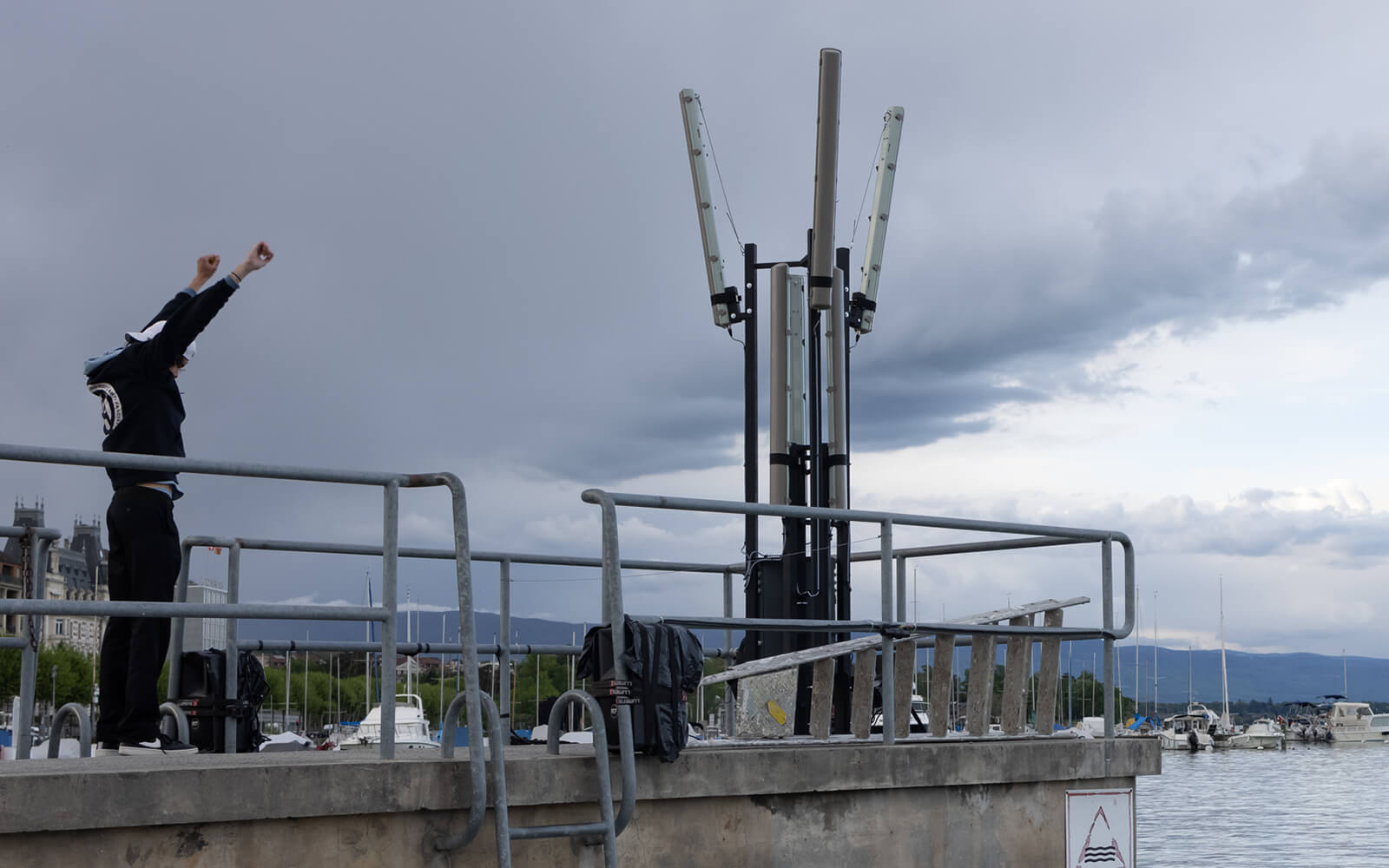
Laine Nooney on How the Personal Computer Broke the Human Body
“To consider the history of computing through the lens of computer pain is to center bodies, users, and actions over and above hardware, software, and inventors.”
Sarah Friend launches Off, an NFT project that is artist edition, artwork, and multiplayer game all at once. 255 collectibles, each the exact pixel dimension of various computer, smartphone, and tablet screens, contain both a public and a secret image. Hidden across all secret images is an encrypted essay and its key. With a majority of key shards required to decrypt the hidden sentences, the essay is revealed only if enough collectors are willing to share their images. “Will you choose to cooperate or defect?”
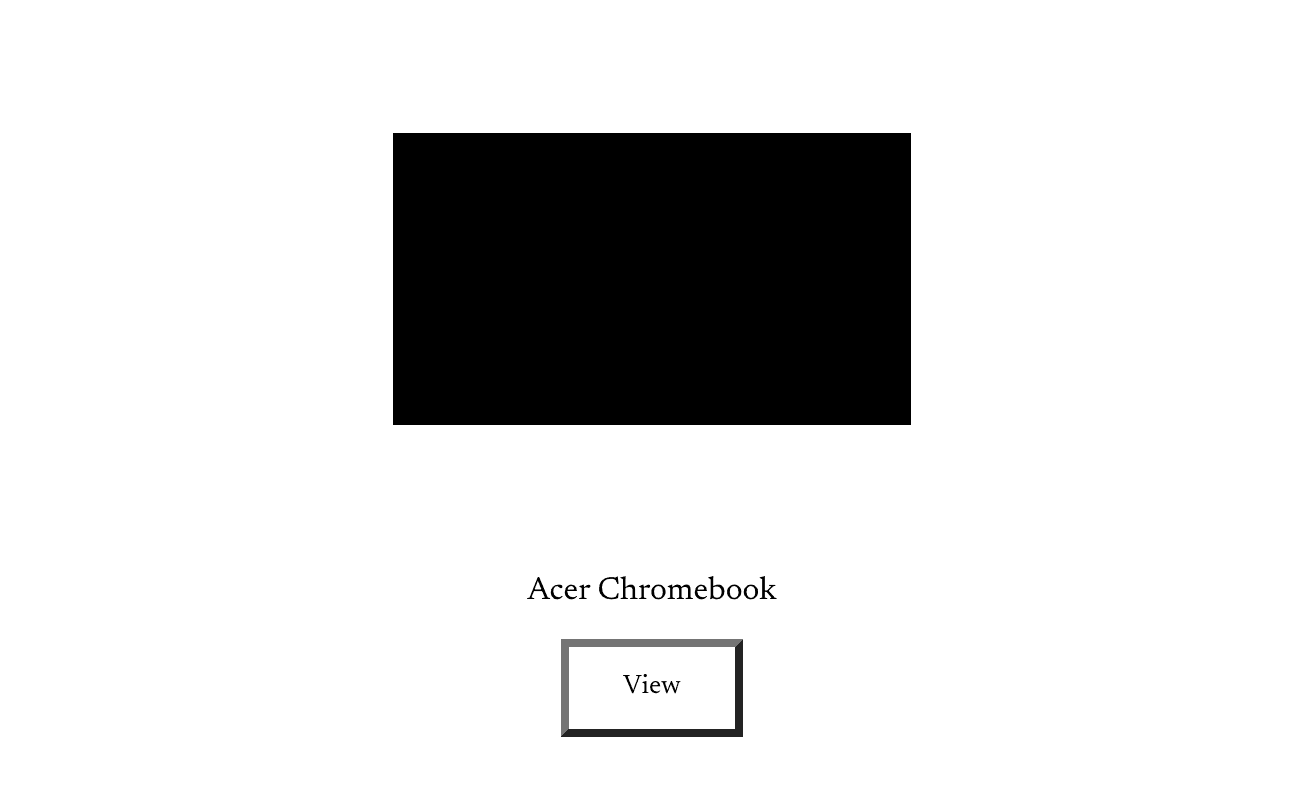
Jeremy Bailey on Seizing (and Queering) the Means of Production
“That would be the one thing I’d love to leave the audience with: this idea that to be a true anticapitalist you appropriate the means of production. That’s what I’ve always pursued—and queer it, if you can.”
Alaina Claire Feldman Sounds Off on “Songs of the Humpback Whale”
Songs of the Humpback Whale made waves in the 1970s, shaping new age culture and the environmental movement. For e-flux, Alaina Claire Feldman offers a definitive history—delving into the album’s cold war origins (surveillance for Russian submarines) and its artifice (assembled in an editing suite). Framing whales as “barometers of the traffic and health of our oceans,” she describes the “minor listening” we do, in reconstructing the ocean’s soundscape for human consumption.
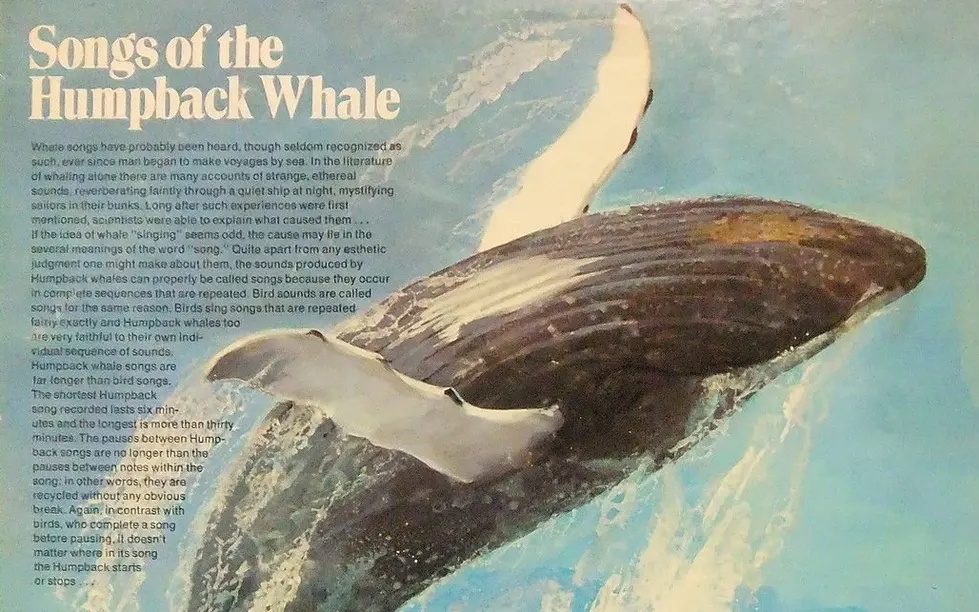
Chloe Stead Debunks that Growth—or Happiness—Can Be Measured in GDP
“What if, instead of focusing on production capacity and economic growth, we started to take attempts to measure internal transformation more seriously? One result might be that more countries adopt universal healthcare, free education, and a higher minimum wage.”
Internal Growth
“The U.S. has the biggest GDP in the world, but it ranks only 18th on the happiness scale—a pie in the face for economists or politicians who insist that GDP is the best way to measure progress.”

Determined to not let lockdown blues get the better of me, I started 2021 by buying myself a gratitude journal. Turquoise and hardbound with gold lettering on the cover, this rather beautiful object has quickly become part of my morning routine, and while I wouldn’t say it’s changed my life, I have noticed that taking a few minutes each day to write down what I’m grateful for has produced a subtle shift in how I think. In the past, I’ve been guilty of treating success as a constantly moving goalpost, but regular journaling has encouraged me to celebrate even the smallest of wins, which, during lockdown, might be as simple as preparing myself a healthy lunch or checking in on a friend.
It might sound a little sentimental, but what my new routine has taught me is to value internal as well as external growth. It’s a realization that I’m sure anthropologist Valerie Olson, who I quoted in the introduction to this dossier, would be happy to hear. Speaking with DISNOVATION for the project’s interview series, Olson argued that western society has a “prejudice or a bias toward thinking about growth externally,” which blocks us from “using other knowledges than western knowledges to think about internal growth, or internal transformation as being another valuable focus for energy.”
Watching this interview again, I couldn’t help but think of the UN’s World Happiness Report, which measures countries on factors such as social help and freedom to make life choices rather than solely on their GDP. Unsurprisingly, it’s poor countries in long protracted conflicts, such as Yemen and Afghanistan, which fair the worst, but the fact that it’s Finland that has won the top spot for the last three years suggests that the size or power of a country has a limited effect on the happiness of its citizens. Take the U.S. as an example. It has the biggest GDP in the world, closely followed by China, but it ranks only 18th on the happiness scale—a pie in the face for economists or politicians who insist that GDP is the best way to measure progress.
What if, instead of focusing on production capacity and economic growth, we started to take attempts to measure internal transformation more seriously? What would change if the American media reflected on these reports rather than mock or underplay them, such as one article in which the author called a Pew Research Center survey “complete crap” because Nicaragua was above “wealthy Japan”?20 One result might be that more countries adopt universal healthcare, free education, and a higher minimum wage, all of which are common in the countries that repeatedly top these lists. It might seem like a pipe dream right now, but it’s something that we should strive for, nonetheless. To quote a motivational phrase from my gratitude journal: “Whether you think you can, or you think you can’t—you’re right.”21
Jeremy Bailey & Ryan Stec
DEL Reflection: Jeremy Bailey
“I think what we’re seeing right now is a golden age of artists cooperating to own the means of production. That would be the one thing I’d love to leave the audience with: this idea that to be a true anticapitalist you appropriate the means of production. That’s what I’ve always pursued—and queer it, if you can.”
Liner Notes:
Taking stock as DEL begins to wind down, “Famous New Media Artist” and Steering Committee member Jeremy Bailey and Artengine’s Ryan Stec muse over the persistant mythologies around the comingling of art and money that continue to cloud perceptions of aura and value—especially now, as we struggle to assess a world full of freshly-minted NFTs. Speaking to “the big C” of capital—the strange anxities it provokes within the art world—the duo dispell the romantic notion that money is a blight or intrinsically ‘impure,’ and pragmatically discuss what art plus capitalism (plus a critical agenda, of course) looks like.
These quotes, notes, and references are highlights from a 40-minute conversation that took place between Jeremy & Ryan in Spring 2021. Click through below and watch the entire exchange.
01 – Lean Artist
“The world’s first seed accelerator for artists,” the Lean Artist initiative has run at A/D/A Hamburg (2016, image) and MCA Chicago (2018). Adopting the startup world’s agile approaches and the minimum viable product model, 10 creators have worked with Jeremy to conceive and monetize projects.
02 – Fluxus
The Fluxus sentiment that art is not for the bourgeoisie is cited as being crucial. Inspecting the score for George Maciunas’ performance Trio for Ladder, Mud and Pebbles (1964) evokes that movement’s inherently messy, visceral, and embodied nature—a full-on rebellion against the elitist positioning of ‘art as rarified commodity.’
A trail of early and recent cryptoart laid out by curator Kenny Schachter, “Breadcrumbs: Art in the Age of NFTism” opens at Cologne’s Galerie Nagel Draxler. Works by 16 artists including Rhea Myers, Kevin Abosch, Anna Ridler, and Sarah Friend are presented in an eccentric installation—photos, paintings, objects, and screens are augmented with written commentary—and soon as NFTs. “The show will put to rest two demonstrably false assumptions: that this is a fad, and/or not art,” writes Schachter.
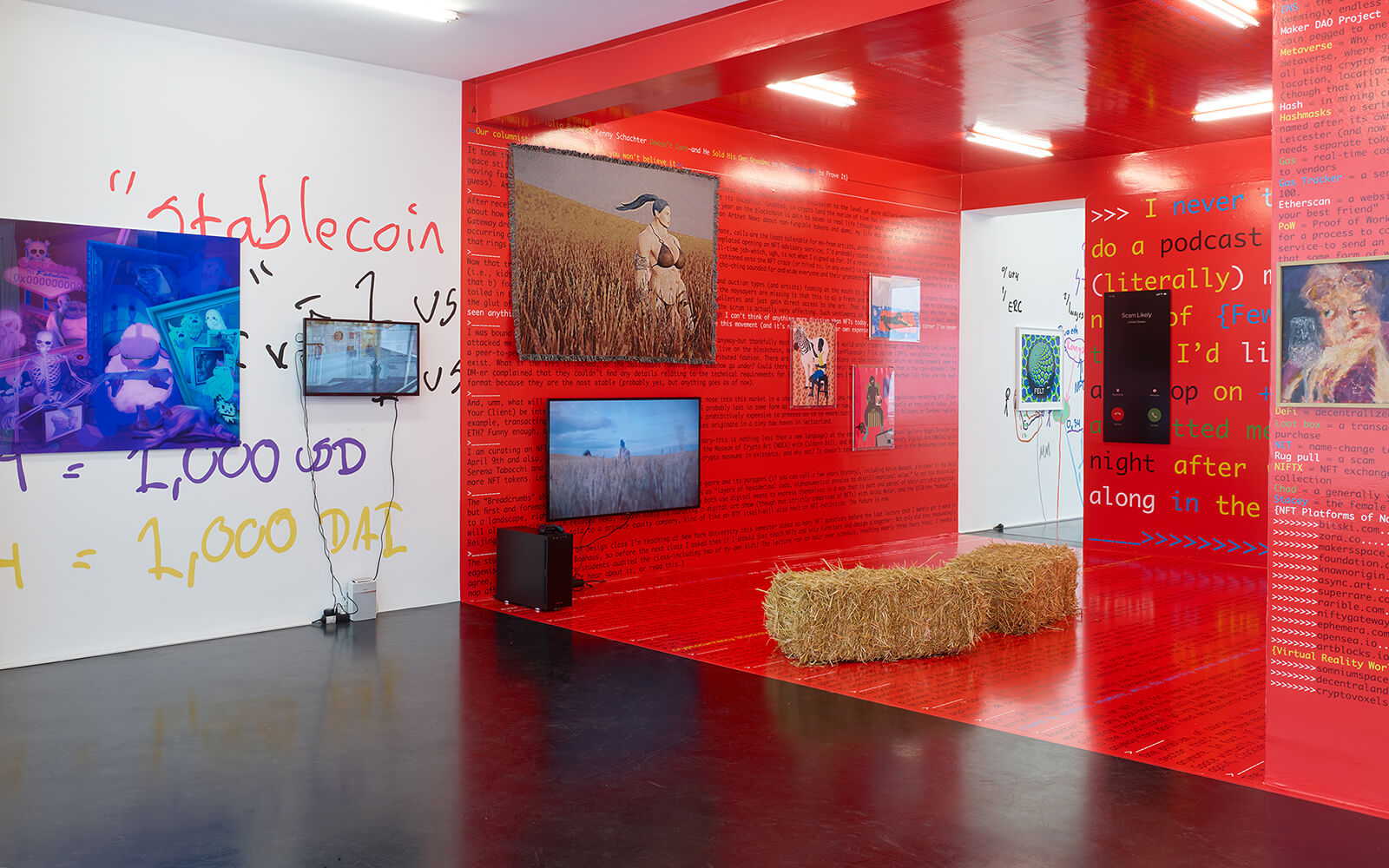
50-Year-Old Japanese Man Uses FaceApp to Pass as a Woman, Live his ‘Cute Biker Girl’ Dream
“Nakajima said he doesn’t know how long he’ll keep Soya alive. But he said he’s grateful for the way she helped him feel: carefree, adventurous, seen.”
Digital Art Pioneer Manfred Mohr Celebrates 50th Anniversary of His First Museum Show
Digital art pioneer Manfred Mohr celebrates the 50th anniversary of his solo show “Computer Graphics: Une Esthétique Programmée,” that opened at ARC Musée d’Art Moderne, Paris, on May 11, 1971. “I showed around 25 computer generated pen plotter drawings and demonstrated the use of a flat-bed plotter,” Mohr reminisces in his newsletter. “Thanks to the incredible foresight of Pierre Gaudibert, founder and director of ARC, this show became the first one-person show of digital art in a museum.”
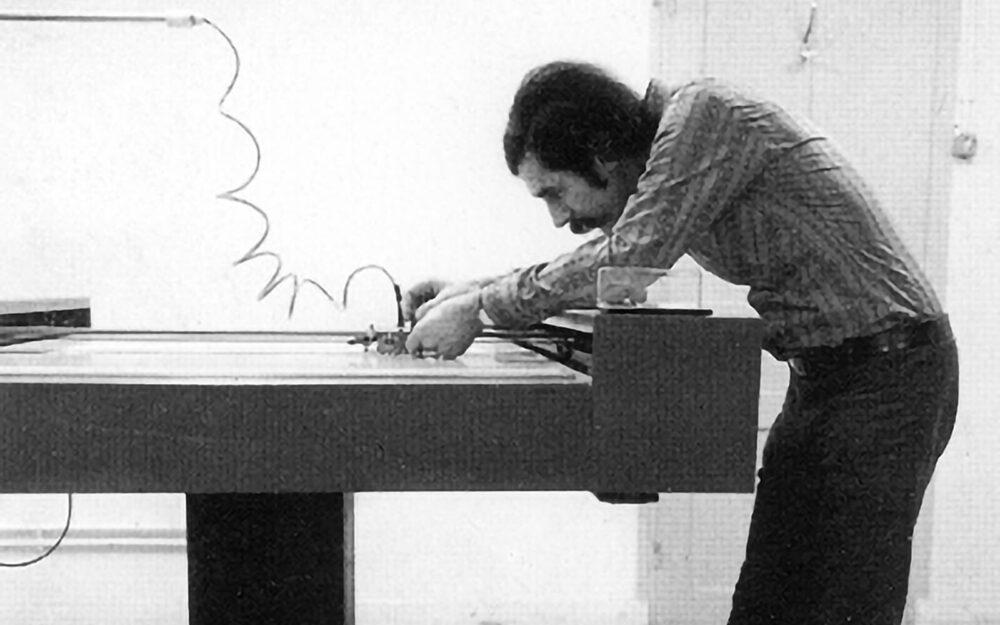
Boom, Bust, Echo
“There is a sense that a parallel art market is emerging that comprises a new set of artists and collectors. But the $69 million question is whether this is going to become another hype cycle like virtual reality was in 2016, or Net art before the dot-com bubble burst in 2001.”
Ryoji Ikeda on the Science that Drives His Artistic Work—and the World
“There is no Chinese mathematics and French mathematics. Mathematics is just one.”
Patrick Blanchfield Puts ‘Cancel Culture’ in Perspective
“So we’re in a very psychotic moment, where we’re trying to figure out consequences. Humanity itself may soon be ‘cancelled’ by climate change … the fish are going to get cancelled in a couple decades and then we’re fucked, right? That’s all looming over this—death is the great canceller.”
Combining photography, poetry, and monumental pixel builds, Ender Gallery’s inaugural resident Cat Haine opens the Minecraft exhibition space with a “playful transfeminist intervention.” Exploring the platform’s potential for queer and trans intimacies, Haine’s “(g)Ender Gallery” features a colossal reconstruction of the artist’s surgically-constructed vagina that contains text and images reflecting upon her transition.
